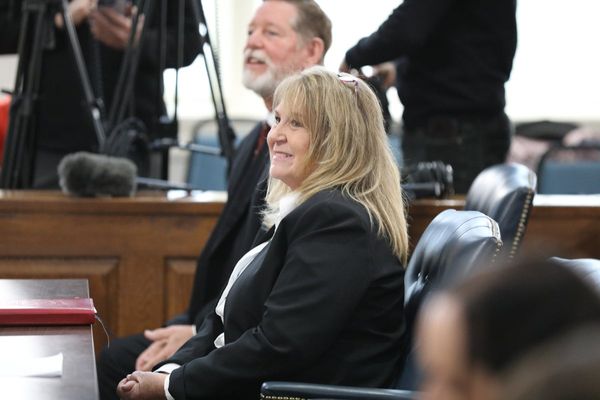
The scientist who thought up the Lake Onslow pumped-hydro scheme, known as the NZ Battery Project, sees bigger potential than just a dry year stop-gap
Central Otago’s Lake Onslow has been found to fit the bill for a large-scale pumped-hydro scheme but with big environmental, social and cultural trade-offs, according to a just-released paper.
In an update to Cabinet, Energy and Resources Minister Dr Megan Wood says initial work shows pumped-hydro at Lake Onslow, near Roxburgh, is technically feasible and its use could be extended beyond mitigating the dry-year electricity-supply problem.
She believes it would support a pathway to a 100 percent renewable electricity system.
If the scheme proceeds it would be the largest hydro project in New Zealand’s history and could cost more $4 billion.
Much of the detail about trade-offs was redacted in the paper “in accordance with MBIE’s policy on ‘proactive release’” and as “confidential information entrusted to the government”.
The paper acknowledges that although the NZ Battery Project aims to reduce New Zealand’s greenhouse gas emissions and contribute to global emissions reduction and net climate gains, its negative effects need to be balanced against benefits.
The lake is an important cultural, social and landscape asset and the project would “create a visual impact on the naturalness and uniqueness of the Lake Onslow landscape”.

Highly regarded by anglers, its stocks of brown trout were likely to deteriorate with the raising and varying of the lake level associated with the scheme. The expansion of the water body would also flood private land requiring Crown compensation.
Information about discussions with mana whenua and cultural interests in the taking of water are not detailed in the public version of the paper.
Power to the people
Demand for electricity is expected to grow rapidly with the electrification of the economy and the move away from fossil fuels.
Meeting that will require a “huge and sustained” increase in renewable generation but this will not solve the dry year problem.
The government’s NZ Battery Project has been exploring options for storing renewable energy primarily for use during dry years, but also now for an anticipated increase in calm and cloudy weather.
Woods suggests that year-round use of the previously dry-year-focused Onslow scheme could be better for consumers and supply.
“Operating solely for dry-year security by limiting its operation to set thresholds could risk distorted market signals, result in higher prices at times of scarcity and less private investment in other renewable generation. It would likely prevent it contributing to managing calm, cloudy periods of low wind and solar generation, and to unforeseen supply emergencies.”
She says operating continuously means the asset could be used much more efficiently, supporting security of supply through a broader range of challenges.
“If operated on a continuous basis, it could be broadly revenue-positive, though it will have significant variability in its revenue between wet years when it would be a net consumer of electricity as it pumps and stores energy and dry years when it would generate and draw down on its storage.”
Year-round potential
Hydrologist and University of Waikato associate professor Earl Bardsley, who first saw the potential in Lake Onslow as a pumped-hydro scheme, says he supports year-round use of the facility.

He says the idea of Onslow operating in continuous mode came from the University of Waikato in 2019 when a PhD thesis by Mohammed Majeed, which simulated Onslow pumped-storage operation in continuous mode, was published.
“Near-continuous operation is entirely sensible - I would say essential to get the most bang for your buck and from an environmental point of view.”
He says this wouldn’t result in massive water-level fluctuations outside of dry years.
“The critical thing is that it would place upper ceilings and lower floors to the wholesale electricity prices. This encourages wind-power development, essentially wipes out fossil fuels and reduces spill loss from existing hydro lakes.
“For sure, you would pay for electricity to pump water in a wet year because that's the time of lowest electricity price. And then generate later when power is needed and prices higher. That's a really good use of Onslow and the hydro-system resource.”
Water would be pumped 600m vertical uphill from the Clutha River to an enlarged lake, via a 16km to 24km-long tunnel inside the mountain. The much-expanded manmade lake would lie behind an approximately 80m-high dam - either compacted concrete or rockfill according to the update -and the powerhouse would be underground.
To avoid interfering with Contact Energy’s existing hydro operations, water would need to be extracted downstream of Roxburgh Dam and a reservoir may have to be built, the paper states.
“Taking water from a point downstream of the Roxburgh dam would likely require a way to pool some water off the river, to create a small amount of storage.”
The expanded Lake Onslow, which is 700m above sea level at its minimum level, would still be under half the size of Lake Pukaki, but its generating capacity would be up to 1500MW, more than the country’s biggest power station, coal- and gas-fired Huntly, at 953MW. The lake would store 5500GWh of energy, more than the nominal full storage of all the country’s hydro-electric lakes, which is 4409GWh.
Funding tap flowing
Funding of about $100 million was provided for the NZ Battery Project: $30 million for the initial feasibility study (phase 1) and $63 million for development of a detailed business case (phase 2), with the rest going on staffing and overheads, the paper states.
The Ministry of Business, Innovation and Employment has spent just over $10 million on the feasibility work, of which about $8 million relates to feasibility of pumped hydro at Lake Onslow.
Woods says she will report back to Cabinet in December with information on final feasibility work and an indicative business case on the Lake Onslow scheme as well as further information on other renewable-energy storage options.
Other technologies, such as renewable sources of combustion material, expanded geothermal generation and clean hydrogen, have also shown potential as parts of an alternative approach to solving the dry-year problem, according to the paper.
Made with the support of the Public Interest Journalism Fund








